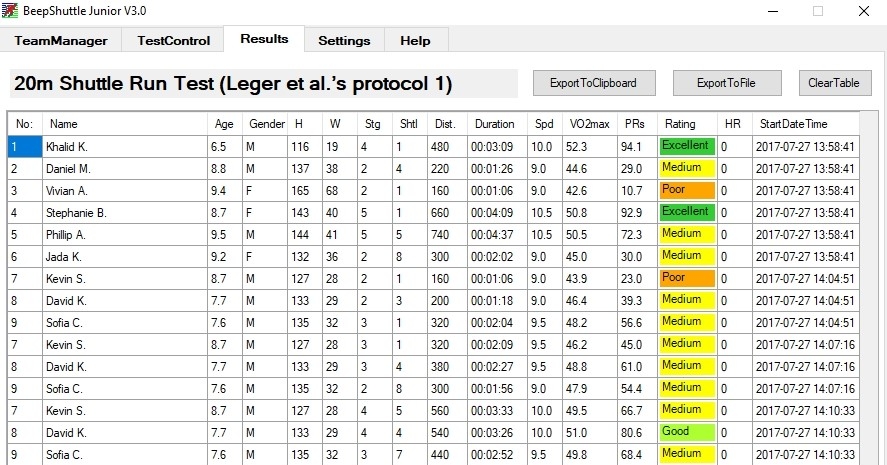
However, the findings of a recent systematic review demonstrate that the children in these studies did not reach maximum exercise intensity. In pediatrics, due to the motivational aspect, researchers have used virtual systems as a resource to assess cardiac response. Įarlier studies have evaluated the physiological responses to video games in healthy children or those with pulmonary disease. In recent years, interactive video games, known as Virtual System (VS), have been used for rehabilitation in different areas, such as geriatrics, neurology and pediatrics.

The tests are motivational, and most children obtained the maximum VS score. The perceived exertion scales were correlated, but only the modified Borg scale correlated with HRmax in the 20 m SRT. VS can be used as a tool to evaluate the intensity of maximal exercise tests, given that the percentage of children who achieved HRmax did not differ between the VS and 20 m SRT. The multiple logistic regression model showed that motivation ( p = 0.98), sex ( p = 0.53), age ( p = 0.61), nutritional status ( p = 0.65), and speed ( p = 0.18) were not predictive factors of the child’s reaching HRmax.

The children showed greater exertion on the Borg scale and motivation during the VS. Both tests were similar for intensity > and < 96% HRmax. Maximum heart rate (HRmax) did not differ between the 20 m-SRT and VS (194.4 ± 10.2 bpm vs. Perceived exertion at the end of the tests was assessed using the modified Borg scale. To evaluate the influence of motivation on the 20 m SRT and (VS), at the end of the tests the children were asked to rate their motivation on a scale of zero to 10, zero being “not cool” and 10 “awesome”. Their resting heart rate was monitored for one minute and then throughout the tests. The two tests were performed one week apart and the children were instructed not to engage in any physical exercise or sports in the 24 h preceding each test. This is a cross-sectional study of 235 children (9.0 ± 0.8 years, 109 boys). The purpose of this study was to verify the agreement between the 20-m shuttle run test (20 m-SRT) and virtual system (VS).

At first the speed is slow, but the speed will increase at the end of each minute.

The student will hear these bleeps at regular intervals. The objective of the progressive shuttle run test is to run as long as possible there and back along a 20m track, keeping to the speed indicated by the bleeps on the CD. There are three parts to the fitness assessment


 0 kommentar(er)
0 kommentar(er)
